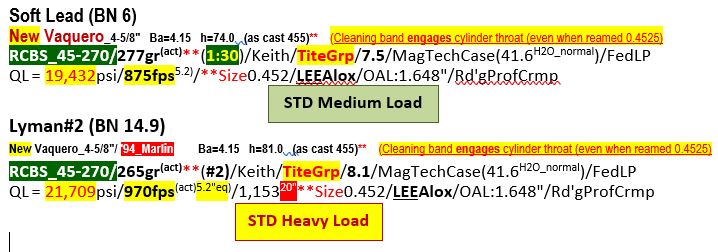Hello Guys,
I have finally shot 50 rounds of my first batch of cast bullets using LEE 255 gr mold for 45 colt. The bullets mic'd .452-.4525". A very small few were in the .451" range. Bullets were unsized. All of these bullets are out of round. Cylinder throats measure ~.4525 to .453". None of the case bullets push though the throats by finger pressure.
I have shot a lot of commercial cast bullets sized .452" in this revolver with no leading issue.
Alloy: coww
lube: lsstuff's xlox (1 coat applied very lightly), tumble lubed
load: 8.0 gr Unique
gun: S&W M-25
My first batch showed decent accuracy, but the barrel leading was significant--through entire length of bore with strips of lead embedded in the grooves.
Could you enlighten me on what may be going wrong?
1. not enough lube? since I lubed lightly?
2. out of round bullets causing blow by?
3. need a larger diameter bullet? .453 to .454"?
I would appreciate your input. Thanks in advance.

|
   
   
|


|



 Reply With Quote
Reply With Quote






















